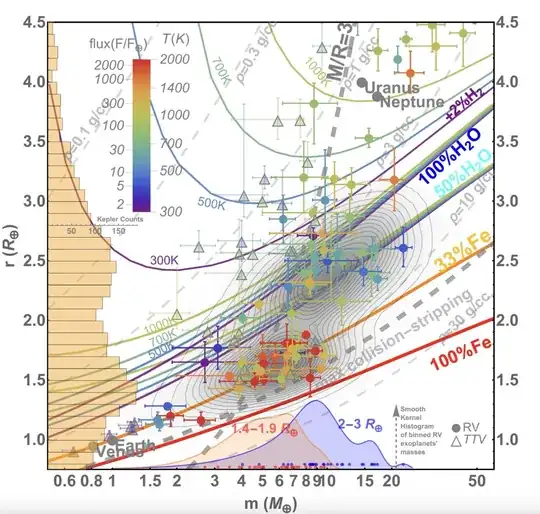Kind of
There isn't a direct correlation between planetary mass and atmospheric composition/mass/density. While some general trends have been observed which could give you a fair answer in this case, I can state with fair confidence that this planet quite likely cannot exist.
If modeled as a sphere — which it isn't, but the approximation is close enough — this planet has a density of about 5,271 kilograms per cubic meter, comparable to Earth. The problem is that it has Earth-like density but the mass of a fairly substantial ice giant — not even a mini-Neptune, because it's more massive than Neptune and Uranus combined. The mass of planets of this size means they invariably acquire large gas envelopes that reduce their density to something below 2,000 kilograms per cubic meter. Here is a complicated answer by HDE 226868 which explains this relationship better than I can; the long and short of it is that the bigger the planet is the better it is at holding onto fluffy, lightweight things like hydrogen, helium, nitrogen, and the like.
Note that I say "gas envelope", not atmosphere. See, the thing about really big planets is that the difference between the surface and the atmosphere stops existing. On Jupiter, for instance, there's no boundary between "air" and "ground", nor is there ground in the first place; the atmosphere simply gets thicker and thicker the further down you go, and at some point it likely starts being a supercritical fluid instead of a gas.
So this planet might have an enormous rocky core that indeed masses 39.09 Earth masses and has a radius of 3.5 Earth radii, but that enormous rocky core is going to become wrapped in a gigantic blanket of what will most likely be water vapor, methane, and ammonia, and to some lesser degree hydrogen and helium.
Now, it is possible for you to have a rocky planet that's larger than the Earth. Super-Earths are generally accepted to exist and mega-Earths or supermassive terrestrial planets are hypothetically possible. However, even the largest proposed mega-Earths, barring freakish exceptions which may be due to data processing errors and not actually exist, are somewhere around Neptune-sized. Below are some tables detailing the expected compositions of planets with certain radii and masses, and here's a video with a more detailed table.



As these tables can show you, it is, to some extent, possible to make an educated guess about some atmospheric characteristics based solely on planet size. But I would have a hard time believing something with the mass of your planet is going to have that density, and I can also state with a fair degree of confidence confidence that it'll be a Neptune- or Uranus-like planet.
Now, there is one exception to this — as in your previous question, this planet could be a Chthonian planet. However, it would have to have formed out of quite a large gas giant; Jupiter's core, if it is rocky, is perhaps 14 to 18 times the mass of the Earth, and this planet is larger. The range of bodies which would have a 39-ish Earth mass rocky core are somewhere between "Jupiter but larger" and "incredibly small brown dwarf". However, the solar flux needed to blast the gas envelope off a body that size quickly enough for life to evolve before the star in question dies would also likely be enough to bake the surface of the resulting planet (or even disintegrate it), so take this with a large grain of salt.



